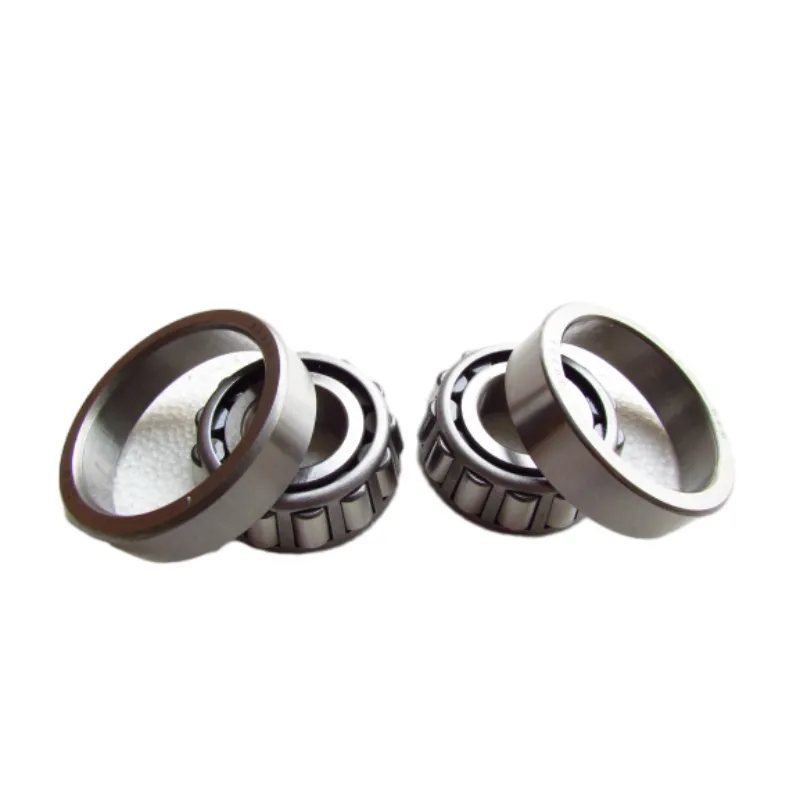
Dec . 18, 2024 10:05 Back to list
thrust plain bearing
Understanding Thrust Plain Bearings Principles and Applications
Thrust plain bearings play a crucial role in various mechanical systems by supporting axial loads. Unlike traditional rolling element bearings, which use balls or rollers to reduce friction, thrust plain bearings function through a sliding mechanism. This article delves into the principles, construction, advantages, and applications of thrust plain bearings.
What are Thrust Plain Bearings?
Thrust plain bearings are designed to accommodate axial loads, meaning they support forces parallel to the shaft’s axis. These bearings consist of a flat surface, often made from durable materials like bronze, steel, or specialized composites, which acts against a corresponding flat surface. When the shaft rotates, the bearing surface slides smoothly against the mating surface, allowing for rotation while supporting the load.
Construction and Design
The construction of thrust plain bearings is relatively simple compared to other bearing types. A typical thrust bearing comprises two main components the bearing pad (or thrust disc) and the housing. The pad is usually equipped with a lubricant reservoir to reduce friction and wear. This lubrication can be provided by oil or grease, depending on the operating conditions and the specific design requirements.
Different designs of thrust plain bearings include
1. Flat Thrust Bearings The simplest type, consisting of two flat surfaces that slide against each other. 2. Collared Thrust Bearings These have a collar feature that prevents lateral movement, providing added stability.
3. Grooved Thrust Bearings Featured grooves in the sliding surfaces to enhance lubrication distribution and reduce friction.
Advantages of Thrust Plain Bearings
Thrust plain bearings come with several advantages over roller and ball bearings
1. Simplicity of Design The fewer components mean that thrust plain bearings are often easier to manufacture and assemble.
thrust plain bearing

3. High Load Capacity These bearings can handle substantial axial loads and are suitable for high-pressure environments.
4. Low Noise Operation With no rolling elements, thrust plain bearings operate more quietly than their counterparts.
5. Durability Made from robust materials, thrust plain bearings can withstand harsh operating conditions, especially when properly lubricated.
Applications
The unique characteristics of thrust plain bearings make them suitable for various applications
- Automotive Industry Used in clutches, transmissions, and pumps to manage axial loads effectively.
- Aerospace Sector Essential components in aircraft engines where they support significant axial forces while ensuring low friction.
- Industrial Machines Found in conveyor systems, mixers, and other machinery that require stability and reliability under weight.
- Marine Applications Employed in ship propulsion systems, thrust bearings endure the continuous high loads from engines.
- Power Generation In turbines and generators, these bearings help manage the shaft's axial movements during high-speed rotations.
Conclusion
Thrust plain bearings are foundational components in many mechanical systems, delivering essential performance through a simple yet effective design. Their ability to support axial loads, along with benefits like cost-effectiveness and durability, ensure they remain a staple in industries ranging from automotive to aerospace. Understanding the principles governing these bearings can aid engineers and designers in selecting the appropriate type for specific applications, ensuring efficiency and longevity in their operations. In a world where machinery needs to perform reliably under various loads and conditions, thrust plain bearings are indeed a vital player in engineering.
Latest news
-
Premium Deep Groove Ball Bearings | High Speed & Reliability
NewsAug.29,2025
-
Durable Scaffolding Clamps - Secure & Reliable Tube Connectors
NewsAug.28,2025
-
Common Failures in Thrust Ball Bearings and Solutions
NewsAug.22,2025
-
How Tapered Roller Bearings Can Take Shock Loads
NewsAug.22,2025
-
Angular Bearings in High-Precision Spindles
NewsAug.22,2025
-
The Impact of Misalignment on Cylindrical Roller Bearing Performance
NewsAug.22,2025
